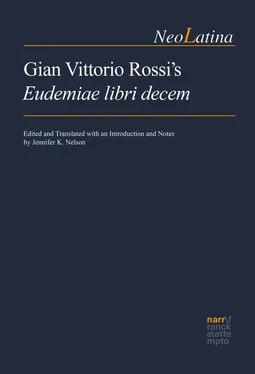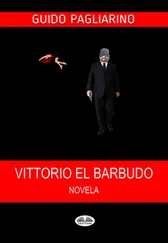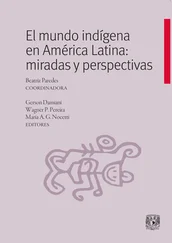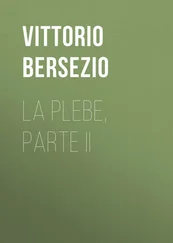1 ...7 8 9 11 12 13 ...44 I began to take up CiceroCicero, Marcus Tullius again, and, even more frequently, PlautusPlautus, Titus Maccius and TerenceTerence, since I desired nothing more than lightheartedness and joyfulness; you can tell that their poetry has colored my speech. I felt that reading these authors made such an impression on me that entire pages of their works have stuck in my memory.12
In writing prose satire with humorous situations and rapid-fire dialogue, humanist authors often looked to playwrights like PlautusPlautus, Titus Maccius and TerenceTerence to provide models of what Jürgen Leonhardt terms “unforced communication”; that is, informal, everyday language that reflects how people might have spontaneously communicated with each other in private.13 RossiRossi, Gian Vittorio’s mastery of this comic style is recognized in a note by Gabriel NaudéNaudé, Gabriel at the end of the manuscript key he penned for the 1637 Eudemiae libri VIII :
Regarding his style, his entire vocabulary is of good quality, taken from the more ancient and pure Latinity of PlautusPlautus, Titus Maccius and TerenceTerence, his diction is not altogether native or Roman, but his entire way of speaking is unhurried, plain, and as if crawling on the ground.14
RossiRossi, Gian Vittorio’s preference for PlautusPlautus, Titus Maccius is obvious in Eudemia where the Roman playwright is his most quoted author, with more than 180 direct citations (drawn mostly from, in order, Miles gloriosus , Menaechmi , Pseudolus , and Curculio ). Rossi’s penchant for examples of colloquial Latin from other authors besides Plautus is also evident. He quotes almost directly from CiceroCicero, Marcus Tullius (at least 130 times, mostly from In Verrem , De oratore , and Brutus ), HoraceHorace (at least 85 times, mostly from the Satires , Epistles , and Odes ), and TerenceTerence (at least 60 times, mostly from Eunuchus , Heauton timorumenos , Andria , and Adelphoe ). Other authors quoted in Eudemia are OvidOvid, Caesar, SallustSallust, StatiusStatius, and SenecaSeneca, Lucius Annaeus, as well as an extensive passage from the medieval author Alain de Lille.15
RossiRossi, Gian Vittorio’s Latin is very clear and can be read using a Classical Latin dictionary such as Lewis & Short. For the most part, even his most obscure words can be found in such dictionaries, although for a few it was necessary to consult Du Cange, Glossarium mediae et infimae Latinitatis (for example, ocularia : spectacles). Rossi’s prose is generally easy to follow; his sentences are rarely very long, and even the longer ones are well structured with clear subordinating clauses. I did find, however, that, if I became tripped up on a word or a phrase in the middle of an otherwise straightforward sentence, it frequently turned out to be a word or phrase that was taken from PlautusPlautus, Titus Maccius.
Stylistically RossiRossi, Gian Vittorio is delightful, frequently indulging in copia verborum , which is a characteristic of Renaissance Latin comedy in general. Indeed, Rossi seems to enjoy supplying every word in his lexical arsenal to describe something or someone vividly. Good examples can be found in Book Two when he describes the prostitute NannaNanna as “subdola, blanda, fraudulenta, avara”; and in Book Six when he uses three different words to refer to ZanchaZancha the broker: “conciliator,” “intercessor,” and “proxeneta.” He similarly indulges in the repetition of verbs in doubles or triples, such as “rogat, instat” or “rogat, instat, urget.” Additionally, he is prone to reusing phrases, for example, in Book Three (54) he describes MicrusMicrus of Pesaro (Giovanni Francesco Paoli) of Pesaro as “in lacessendo respondendoque acutior,” a phrase that is also found, in various permutations, in his other works: in the Pinacotheca he describes Antonio BosioBosio, Antonio as “in lacessendo respondendoque peracutus” and Arrigo Falconio as “in lacessendo respondendoque argutus.” Repeating patterns and phrases such as these, together with his frequent borrowings from his favorite authors and his obvious enjoyment of language, allow the reader to develop a sense of Rossi’s characteristic voice.
One of the biggest challenges in translating Eudemia was settling on a tone that felt appropriate to the text. My reverence for the Latin language (combined with the fact that the best Latin-English dictionaries, like Lewis & Short, were compiled in the nineteenth century) resulted in overly formal and somewhat stilted first drafts. Ultimately, I was advised not to lose sight of the fact that the work is a satire, and thus to approach it as a humorous novel that should be enjoyable to read. That advice, combined with RossiRossi, Gian Vittorio’s frequent quotations from PlautusPlautus, Titus Maccius, and NaudéNaudé, Gabriel’s description of his prose as “crawling on the ground” (“humi serpens”), guided my final decisions as to the informal, conversational tone of the translation (one example being my frequent use of contractions like “don’t” and “I’m” instead of “do not” and “I am”). On the other hand, I tried not to overcorrect and become too informal, deciding, for example, on “urinate” instead of “piss” for “meiere” in a poem in Book One (20). I hope I have achieved a balance that is true to the original, while still being a fun read, and reflects the lightheartedness and joyfulness Rossi so loved.
Text of Eudemiae libri decem
The present edition is based on the text RossiRossi, Gian Vittorio himself prepared: the 1645 Eudemiae libri decem , published by Joan BlaeuBlaeu, Joan, collated with the 1637 Elzevier first edition, Eudemiae libri VIII . The 1740 FischerFischer, Johann Christian edition is not considered here. For the transcribed text I availed myself of the University of Kentucky’s online version1 (based on the 1645 edition in ten books) because, thanks to the efforts of Lina IJsewijnIJsewijn-JacobsIJsewijn-Jacobs, Lina, it was readily available in digital form (though I replace IJsewijn-Jacobs’s section and paragraph numbering system with my own). I reference IJsewijn’s notes, where appropriate, and point out any disagreement. Since IJsewijn’s was a preliminary effort and not intended for publication in its current form, I do not note any textual errors on the assumption that they were inadvertent and would have been corrected.
A few words about the spelling and typesetting conventions in the text are warranted. Both the 1637 Elzevier and the 1645 BlaeuBlaeu, Joan editions reflect early modern Latin spelling conventions, for example coelum and foetus for the more Classical caelum and fetus . I have opted for “radical” Classicization as endorsed by IJsewijnIJsewijn and Sacré (I also modernize punctuation per their recommendation).2 In addition, both editions distinguish between the vocalic u and i and their consonantal equivalents v and j , presenting spellings like brevibus , ejus , and dejicere . One difference, however, is that for the vocalic u in its capital letter form in the initial position, the 1637 edition has u (e.g., Ubi ) where the 1645 edition has v (e.g., Vbi ). Both editions use the long s for lowercase letters in the initial and medial positions, giving us ſine fuiſſe , but Sed and primus . I have dispensed with the long j and ſ altogether and normalize vocalic and consonantal u in all instances. One important typesetting difference between the two editions is that the 1637 edition has frequent instances of abbreviation, with a final m often appearing as a macron over the preceding vowel ( ignotū ), the diphthong æ sometimes appearing as an e -cedilla, and -q; often standing in for -que . Except for the ampersand (&) few abbreviations appear in the 1645 edition. All abbreviations, including the ampersand, are expanded silently. The spelling in the translation is standard American English following Merriam-Webster’s Collegiate Dictionary , 11th edition, and the punctuation generally follows the Chicago Manual of Style , 17th edition.
Читать дальше












